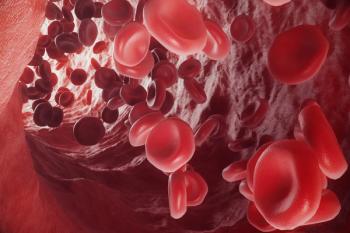
Updated Trial Findings Indicate Neratinib Shows Potential in EGFR Exon 18–Mutant NSCLC
The EGFR inhibitor neratinib may be effective in the treatment of non-small cell lung cancer, according to updated interim findings from the phase 2 SUMMIT trial.
Updated efficacy findings indicated that neratinib (Nerlynx) demonstrated potential in patients with EGFR exon 18–mutant non-small cell lung cancer (NSCLC) from the phase 2 SUMMIT trial (NCT01953926) were presented recently in a poster at the EORTC/NCI/AACR Molecular Targets and Cancer Therapeutics Symposium in Barcelona, Spain.
Interim efficacy data from the NSCLC cohort showed an objective response rate (ORR) of 35% across the total population of 29 patients. Additionally, a total of 30% of patients pretreated with EGFR tyrosine kinase inhibitors (TKIs) responded along with 50% of those who were not. Investigators observed partial responses in 6 patients and stable disease lasting at least 48 weeks in 1 patient.
“We are very excited about these interim study results in patients with EGFR exon 18–mutant lung cancer, for whom treatment options are limited. This study shows that neratinib has the potential to be an efficacious and safe option to treat their disease, even following treatment with other TKIs and chemotherapy,” lead investigator Alejandro Martínez Bueno, MD, head of the Medical Oncology Service at Hospital Quirón Deuxes, said in a press release.
The phase II SUMMIT trial is an open-label, multicenter, multinational basket study evaluating neratinib in patients who have solid tumors with activating EGFR exon 18 or HER2 mutations who have had anywhere from 1 to 6 prior lines of therapy in the metastatic setting. Previous treatments with an EGFR-targeted TKI such as afatinib (Gilotrif) or osimertinib (Tagrisso) had been administered to 23 of the 29 patients enrolled. Patients in the trial received 240 mg of neratinib monotherapy once daily, and were required to undergo anti-diarrheal prophylaxis with loperamide for the first 2 cycles.
The study examined patients with histologically confirmed NSCLC with a documented HER2 or EGFR exon-18 mutation and at least 1 measurable lesion as defined by RECIST v1.1 criteria. The primary end point was ORR and secondary end points include progression-free survival, clinical benefit rate, duration of response, and overall survival.
Patients were excluded if they had certain ineligible HER2 mutations, symptomatic or unstable brain metastases, or if they were receiving any other anticancer agents. Previous treatment with a HER2-directed TKI such as lapatinib (Tykerb) were also grounds for exclusion, except for patients with EGFR exon 18–mutated NSCLC who may have received afatinib, osimertinib, or another pan-HER2 or EGFR TKI.
Common adverse effects (AEs) were diarrhea, constipation, and nausea among the 31 patients who received at least one dose of neratinib. Moreover, 10% reported grade 3 diarrhea, 1 of whom permanently discontinued treatment with neratinib as a result.
Reference
Puma Biotechnology presents updated findings from the phase II SUMMIT basket trial of neratinib in EGFR Exon 18-Mutant NSCLC at the 2022 EORTC/NCI/AACR Symposium. News Release. Puma Biotechnology. October 27, 2022. Accessed November 1, 2022.
Newsletter
Stay up to date on recent advances in the multidisciplinary approach to cancer.

















































































